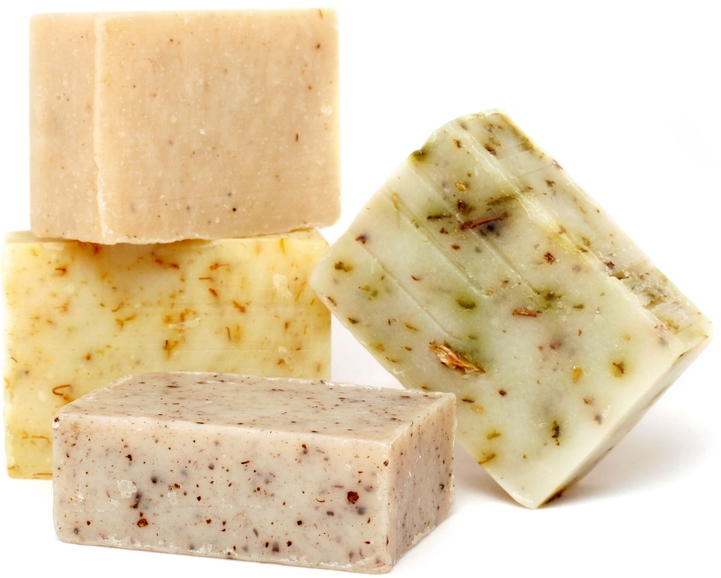If your convictions about eliminating artificial chemicals from your foods have advanced to keeping them off your body, you are probably already buying organic soaps. Soaps are a much bigger part of our budget than most people realize, what with hand soap, shampoo, body wash, dish soap, dishwasher detergent and laundry soap. And that doesn’t count the cleaners that don’t (or at least shouldn’t) touch your body.
If you’ve dabbled with gardening as a fun way to cut down on your organic food budget, perhaps the hygienic equivalent is worth your consideration as well – making your own soap!
Making soap
Most of us don’t garden for economic reasons, though free potatoes and carrots “beet” what you’d be paying at the store for root vegetables. Gardening is fun, relaxing and nothing surpasses the flavor of fresh tomatoes and herbs.Making your own soap can save you a little money and it carries the same rewards as gardening – enjoyment and quality. A deep sense of satisfaction comes with enjoying the work of your hands and then washing them with your own soap.
Making soap is as easy or as complex as you want it to be. The best thing about it is that you choose the ingredients and fragrances. You can create something special that exists nowhere else in the world but by your sink.
Doing it naturally
Natural organic soap doesn’t grow on trees. You will be using a little chemistry to transform oil or fat into something that cleans. You have to use lye in the process, which is potentially dangerous. There’s no way around that. Without lye, saponification doesn’t happen. If you could substitute another ingredient for the lye, it would have to be something equally dangerous.But don’t worry. None of the lye stays in the soap.
Equipment
The equipment you need is not expensive, but not necessarily already available from your kitchen. You shouldn’t use the same bowls and utensils for cooking and eating that you do more making soap. Yes, you can be a meticulous cleaner, but it’s a lot of work and it’s so much more convenient to have all your soap-making stuff in one dedicated place, which may not even be your kitchen. There is a bit of irony in not eating off of your soap-making dishes because they might be “dirty” but nature has a sense of humor.
Use stainless steel, Pyrex, or enamel mixing bowls. DO NOT use aluminum or copper, which react with lye, producing heat and hydrogen gas, which is flammable (see the Hindenburg disaster. Oh! The humanity!) Don’t use plastics, which may melt.
Use styrene or silicone spoons. You can buy really cute and imaginative soap molds at your local craft store. Other than that, you’ll want a couple of canning jars, some newspaper, a towel and a thermometer with a scale between 90 and 200 degrees. It should be stainless steel or glass.For your own protection, use a pair of kitchen gloves and an apron.
Workspace
Where ever you decide to work, it must be well ventilated. When lye does its thing, the fumes can be rather irritating. (Lye is the active ingredient in some of the most powerful oven cleaners and products that unstop clogged drains like Drano. If you’ve ever got a whiff of that stuff when its working, you know what I’m talking about!)
Your workspace will need a source of water, a drain, a way to heat your ingredients, and a flat surface for working. You will also need a place to store everything.

